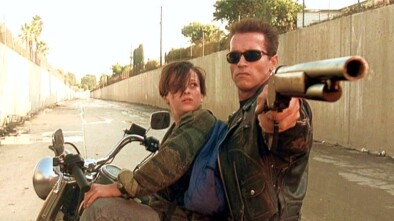‘Galaxy of Terror’: How The Low-Budget Alien Rip-Off Influenced James Cameron’s ‘Aliens’ And The Alien Franchise
Learn how this low-budget film influenced the plot, the production design, and even the lighting of Aliens and the rest of the Alien franchise. Plus, discover how James Cameron rose through the ranks from model maker to production designer to director on Galaxy of Terror which set him on the path to become one of Hollywood’s top film directors.
By the early 80s, Star Wars and Alien had changed the game. Science fiction and sci-fi horror were no longer low-budget, B-grade movies but Hollywood’s new top-tier event pictures. But that didn’t stop the plethora of B-grade imitations that flooded movie and television screens. Unsurprisingly, Roger Corman, the ‘King of the B-movie’, cashed in on the two blockbusters with his own knock-offs that blended his combo of sex and schlock horror with space operas and xenomorph terror. Corman’s first and most successful, Battle Beyond the Stars, is his low-grade knock-off of Star Wars, while its follow-up, Galaxy of Terror, is an unapologetic rip-off of Alien.
Corman never expected to make groundbreaking films. But in a twist of fate, Galaxy of Terror went on to influence the rest of the Alien franchise, especially Aliens.
Many key individuals behind the Alien sequels worked on Galaxy of Terror. Most notable was a young James Cameron, who, at the time, did not think of himself as a film director. His viewpoint changed when he gained more creative control over Galaxy of Terror‘s production after he saw it heading in a shoddy, talentless direction. In hindsight, Galaxy of Terror is Cameron’s dry run for Aliens, and creative traces of this tawdry B-movie are evident in successive entries in the Alien franchise.
Did Aliens Borrow the Plot From Galaxy of Terror?
Bruce D. Clark co-wrote and directed Galaxy of Terror. The New Zealand-born filmmaker had–and still has–a less-than-impressive resume of low-grade films under his belt. Corman wasn’t looking for the next George Lucas or Ridley Scott in his directors. Nonetheless, he did launch the careers of many of the film industry’s most talented actors and directors.
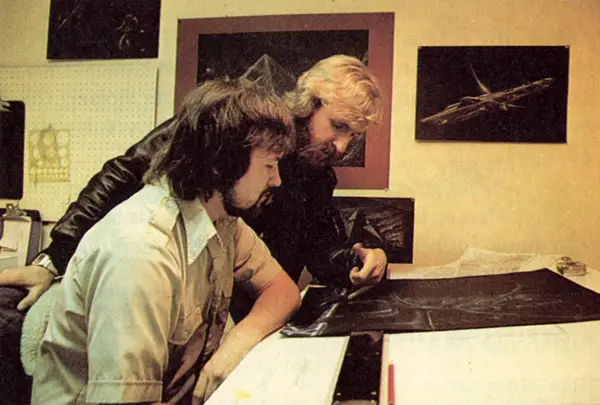
Corman always had an eye for up-and-coming talent he could get on the cheap.
Called the ”University of Corman”, the alumni include actors Jack Nicholson, Martin Scorsese, Robert De Niro, and Sylvester Stallone. Plenty of top film directors got their start under Corman as well. These included Francis Ford Coppola, Ron Howard, Martin Scorsese, Jonathan Demme, John Sayles, and, of course, James Cameron.
Their time with Corman was the big break they needed to move on to more prestigious film projects. And this is how A-grade talent came to work under someone like Bruce D. Clark.
Galaxy of Terror basically stitches together the storylines of Forbidden Planet and Ridley Scott’s Alien. A spaceship crash lands on the planet Morganthus, where the crew encounters a gigantic pyramid-like structure. The explorers get stalked and horribly mauled and violated to death by creatures projected from their own subconscious.
While the plot borrows the premise of a monster hunting crewmembers from Alien, Clark made key plot changes. His space horror does not take place on a ship. Instead, the setting is a deserted structure on an inhospitable planet. One monster is replaced by a multitude of them, which stalk each member of the crew. The parallels to the plot of Aliens are obvious.
Galaxy of Terror delights in the violation of its cast. Erin Morgan’s head is squeezed until it explodes like a pimple. And Taaffe O’Connell is smothered by a giant, horny maggot. The rape scene had to be edited to avoid an X-rating, the censor’s stamp of death.
Corman’s films are schlocky, and puerile, and often elicit a few uncomfortable laughs. They would probably be slapped with a lawsuit or two in today’s social landscape for their overt objectification of the female body in everything from the portrayal of actresses to spaceships that look like flying female genitalia and body parts.
Flying Tits: The Rise of James Cameron
But Corman didn’t come up with these ideas on his own. Corman’s most infamous spacecraft sprung from the mind of the young James Cameron, who began working for Corman in the model shop on the set of Battle Beyond the Stars. To distinguish himself from the rest of the modelers, the aspiring special effects supervisor asked himself: “What is he selling? He sells tits!” And so he proceeded to design a red spacecraft that looked like two flying mammaries. The design impressed Corman. And Cameron quickly rose through the ranks to serve as the production designer on the next film, Galaxy of Terror.
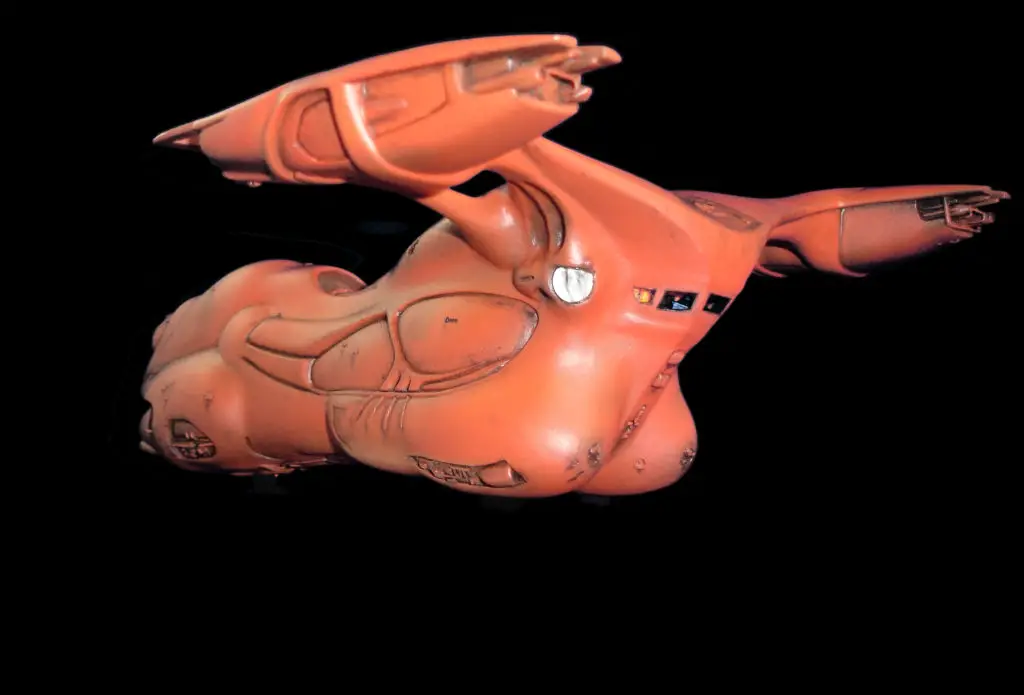
Cameron obviously remembered this ship design as traces of its unusual shape are prevalent in the massive tanks that patrol the dark future in The Terminator and Terminator 2: Judgement Day. In fact, Cameron’s work for Corman provided him with the fertile ground to develop his own, more sophisticated ideas. This process is exemplified by Cameron’s translation of the suggestive mothership in Battle Beyond the Stars into the design of the HK-Tank in The Terminator. Design a ridiculous-looking ship, make it out of odds-and-ends, and shoot it on the cheap. Then years later, update it, build it better on a bigger budget, and make it part of your sci-fi classic.
Cameron used a similar approach with Aliens. But, while he worked for Corman, he always strived to bring high production values to films like Galaxy of Terror. Even on a small budget.
Galaxy of Terror started production a year after Battle Beyond the Stars. As the production designer, Cameron oversaw the design and construction of the film sets and monsters. He also helped craft the film’s miniatures. Soon, he’d be concerned with how the second and first units were framing and lighting his work under Bruce D. Clark’s mediocre direction.
James Cameron Meets His Future Aliens Crew–And Gets To Direct
Galaxy of Terror introduced James Cameron to film directing and later provided a template for Aliens.
We’ve already discussed the influence of the B-grade film on the plot of Aliens. But the similarities don’t end there. They can be seen in the production design, miniatures, and lighting of Aliens and influence on other films in the Alien franchise. Many of these similarities came from the people Cameron met while working for Corman and on Galaxy of Terror. These same people would go on to have a profound impact on the Alien franchise.
His success on Battle Beyond the Stars caught the eye of his future first wife and producing partner, Gale Ann Hurd, who worked as Corman’s assistant at the time. Hurd would later introduce Cameron to composer James Horner, who scored Humanoids from the Deep for Corman and later Aliens for Cameron.
But it’s on the set of Galaxy of Terror that Cameron met two key people who impacted the visual look of the Alien franchise.
And some of those ideas came directly from Galaxy of Terror.
Alec Gillis, who worked on prosthetics on Galaxy of Terror, became Cameron’s creature effects coordinator on Aliens. He’d go on to serve a similar role on Alien 3 (1992), AVP: Alien vs Predator (2004), and AVPR: Alien vs Predator–Requiem (2007).
In addition, Robert Skotak, Galaxy of Terror’s other production designer, worked closely with Cameron on the miniatures. This included the film’s main location, the ancient pyramid that creates monsters from the subconscious. Skotak clearly impressed Cameron, who later hired him to work on the visual effects for Aliens. Their successful collaboration continued on The Abyss (1989) and Terminator 2: Judgement Day (1991). Cameron also struck up a friendship with future Aliens star, Bruce Paxton, who worked under him as a set painter on Galaxy of Terror.
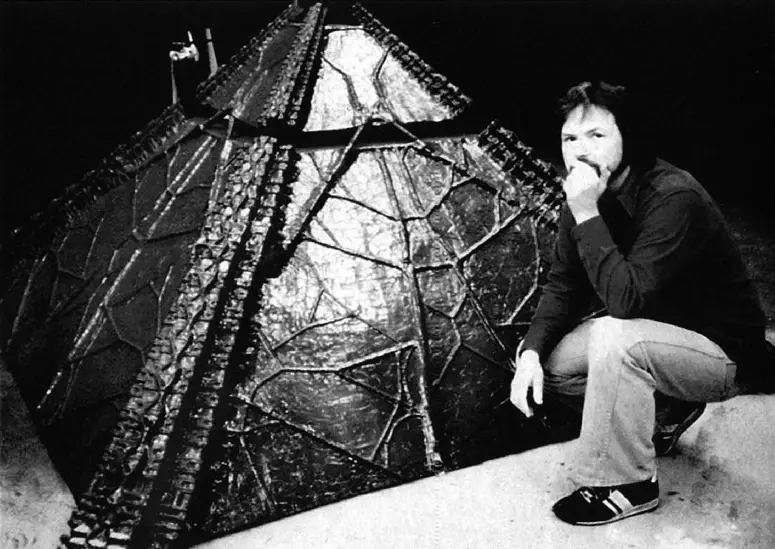
Robert Skotak with the ancient pyramid from Galaxy of Terror.
On Galaxy of Terror, Cameron discovered he could exert control over the creative direction of the production, with Corman’s approval.
Cameron exhibited key strengths under Corman. He was decisive, inventive, thought outside the box, and had a creative vision. As production designer, Cameron re-created the “used future” look of Star Wars and Alien at a fraction of the cost. He and his team of set builders cobbled together polystyrene burger boxes, metal pieces, and electronic components to create interesting spacecraft interiors.
However, Cameron realized his sets were only as good as the lighting, framing, and performances captured by the cinematographer and director. “They had no idea what they were doing,” Cameron said in Rebecca Keegan’s book, The Futurist. “I’m watching them shooting the sets and just blowing it, not getting the shots, not getting the performances.”
For the first time, Cameron considered directing. Under Corman he had already advanced from model maker to production design, so why not director?
“I didn’t think I had that much to offer as a filmmaker. Design, yes, absolutely. I knew that part of it. But I’m watching these guys just fail and I’m thinking, ‘I can do that.’”
While the footage looked amateurish, the production was also behind schedule. So Cameron approached Corman and convinced him to let him shoot. Cameron certainly demonstrated the guts to go after what he wanted, but Corman also encouraged this behavior. Despite the B-grade nature of Corman’s work, Cameron succeeded in the film industry in large part from Corman’s willingness to let Cameron’s inventiveness and talent shine through.
Cameron began shooting brief inserts on the second unit, including the close-up of the severed arm that kills Sid Haig’s character. But as the production fell even further behind, he began sharing first unit directing duties with Bruce Clark. “I had to do actual scenes with the actors. That was my first experience directing.”
How Galaxy of Terror Influenced The Look Of Aliens
Despite the hammy acting, some lifeless cinematography, and the obvious low-budget, Galaxy of Terror exhibits trademarks associated with the moody cinematography of Aliens.
The sophisticated lighting and miniatures of the exterior shots defy the low $700,000 budget. The intense side-lights and blue-fill lights are reminiscent of the future war scenes in The Terminator and the LV-426 exteriors in Aliens, as are the cold, isolated, used look of the miniatures.
Galaxy of Terror opens with a slow tracking shot across a desolate planet. The miniatures, cold colors, and smoky lighting are evocative of the tracking shot across the hostile surface of LV-426 in Aliens. Considering that both Cameron and Aliens’ visual effects supervisor Robert Skotak were responsible for the miniatures, it’s no surprise Aliens has a similar look.
Alien vs. Predator and Prometheus
Aliens’ success spawned more sequels. What is interesting are the various ways AVP: Alien vs. Predator (2004) and Prometheus pay homage to Galaxy of Terror. AVP: Alien vs. Predator is set within the confines of an ancient pyramid, just like Galaxy of Terror.
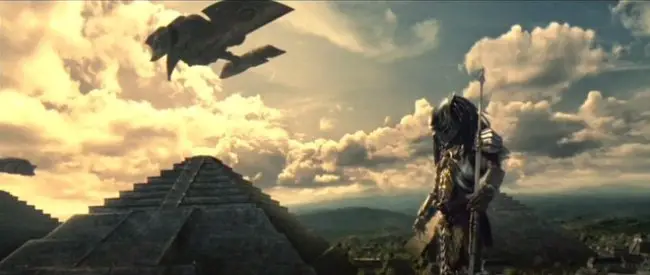
Pyramid in AVP: Alien vs. Predator (2004)
But it’s Ridley Scott’s Alien prequel, Prometheus, which shares significant similarities with Galaxy of Terror. The characters in Galaxy of Terror and Prometheus both exhibit the same paranoid, neurotic traits. And they also meet similar deaths. A space snake breaks the arm of Rafe Spall which echoes the crushing to death of Erin Moran by tentacles in Corman’s flick. An Engineer is smothered to death and impregnated (orally) by a monstrous octopus, which emulates the scene in Galaxy of Terror where actress Taafe O’Connell is raped by a giant maggot. Both films also feature an exploding head.
Galaxy of Terror might be a cheap knock-off of Alien, but its unintentional influence on the Alien franchise has helped it consistently gain a cult following.


